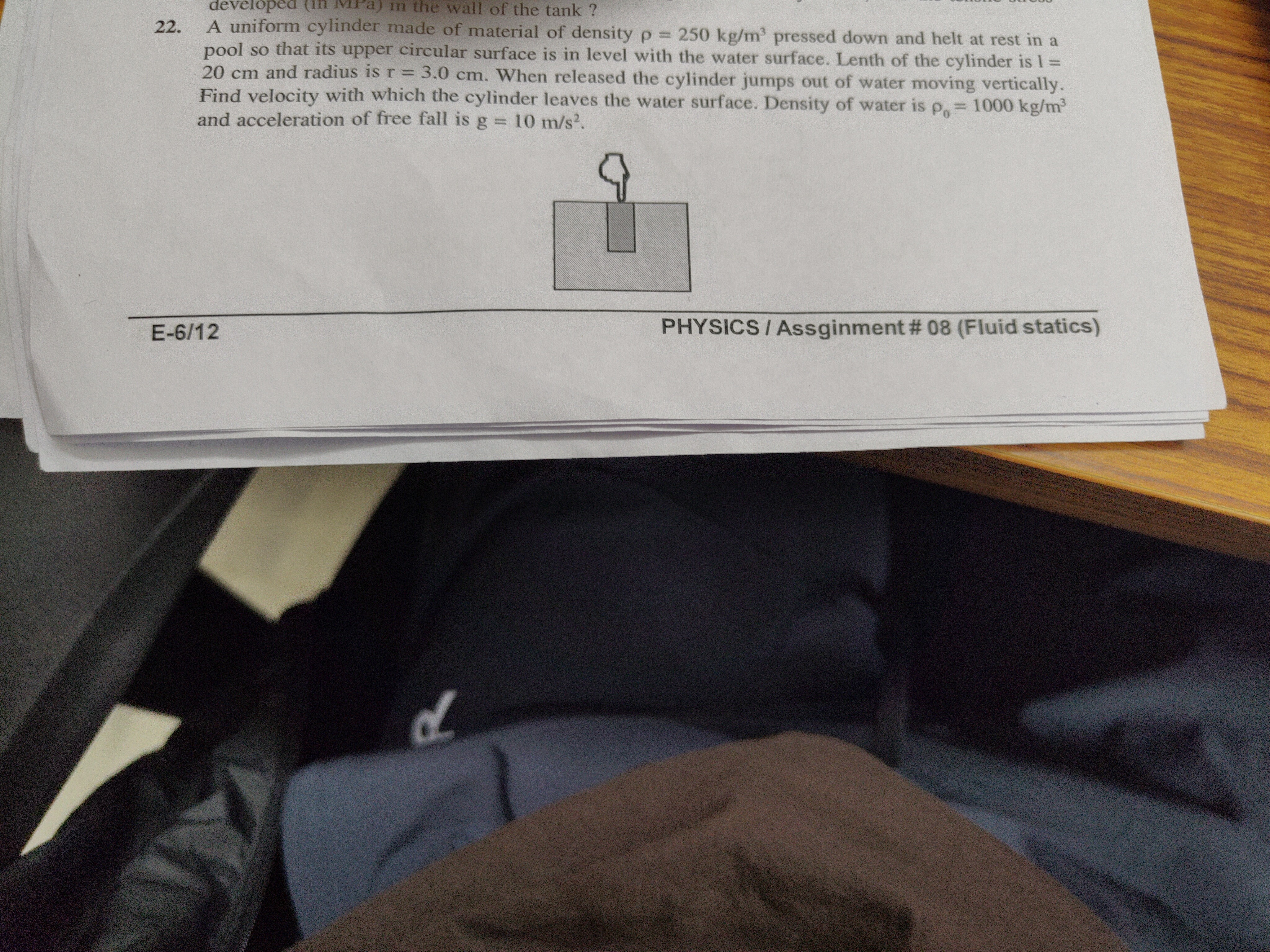Question
Question: A uniform cylinder made of material of density $\rho$ = 250 kg/m³ pressed down and helt at rest in a...
A uniform cylinder made of material of density ρ = 250 kg/m³ pressed down and helt at rest in a pool so that its upper circular surface is in level with the water surface. Lenth of the cylinder is l = 20 cm and radius is r = 3.0 cm. When released the cylinder jumps out of water moving vertically. Find velocity with which the cylinder leaves the water surface. Density of water is ρo = 1000 kg/m³ and acceleration of free fall is g = 10 m/s².

2 m/s
Solution
The work-energy theorem states that the net work done on an object is equal to its change in kinetic energy.
-
Work done by gravity (Wg): As the cylinder moves upwards by length l, the work done by gravity (acting downwards) is Wg=−mg×l=−(ρπr2l)g×l=−ρπr2l2g.
-
Work done by buoyancy (WB): The buoyant force varies with the submerged depth. Let y be the upward displacement of the top surface from the water level. The submerged length is (l−y). The buoyant force is FB(y)=ρogA(l−y), where A=πr2. The work done by buoyancy is WB=∫0lFB(y)dy=∫0lρogπr2(l−y)dy=ρogπr2[ly−2y2]0l=21ρogπr2l2.
-
Net work and kinetic energy: The net work is Wnet=Wg+WB=−ρπr2l2g+21ρoπr2l2g. The change in kinetic energy is ΔKE=21mvf2−0=21(ρπr2l)vf2.
-
Equating work and kinetic energy: −ρπr2l2g+21ρoπr2l2g=21ρπr2lvf2. Dividing by πr2l: −ρlg+21ρolg=21ρvf2. vf2=ρlg(ρo−2ρ).
-
Calculation: l=0.20 m, ρ=250 kg/m³, ρo=1000 kg/m³, g=10 m/s². vf2=2500.20×10×(1000−2×250)=2502×(1000−500)=2502×500=4. vf=4=2 m/s.
